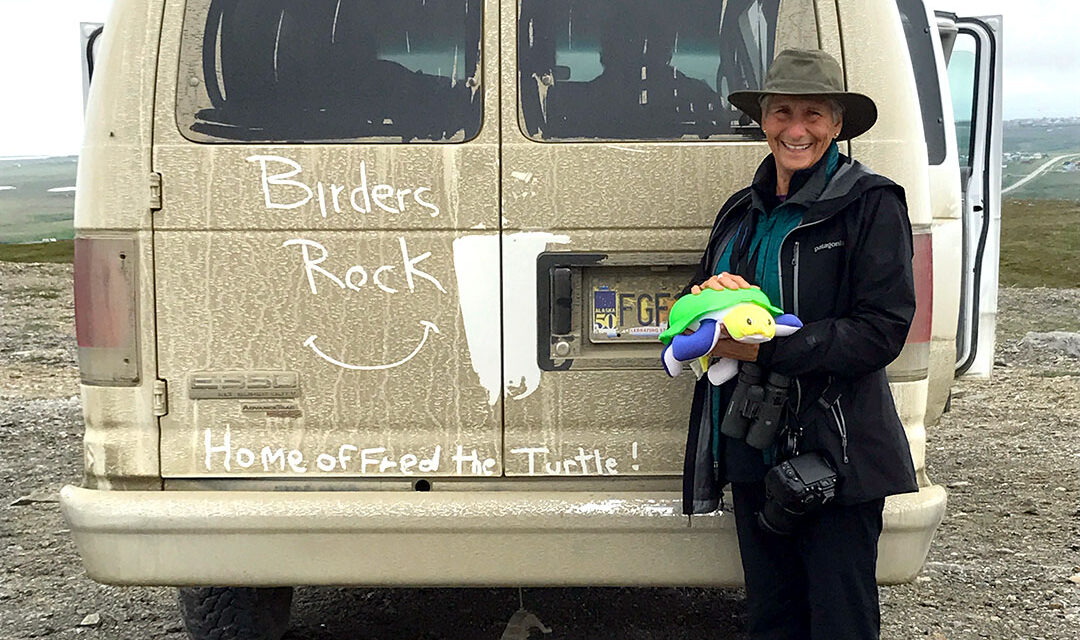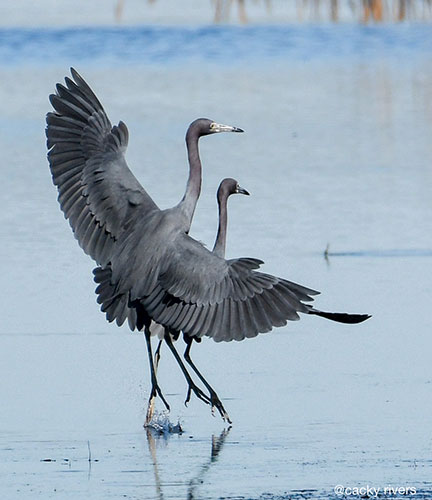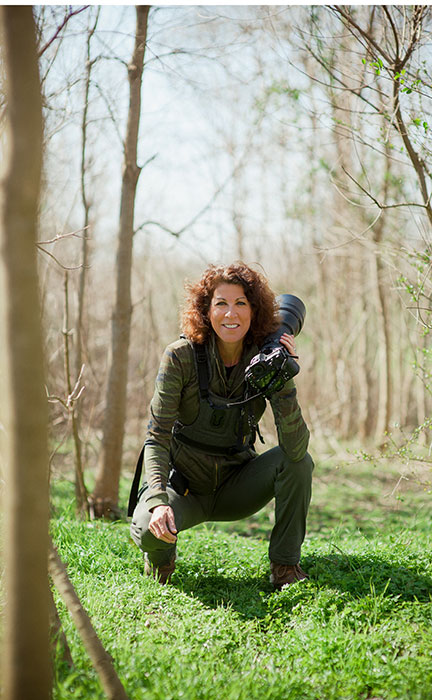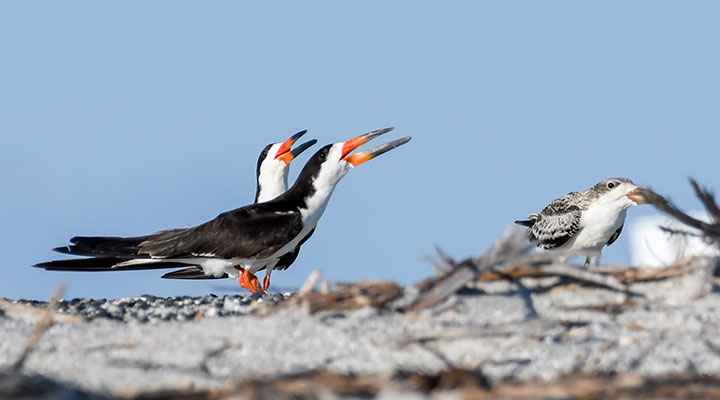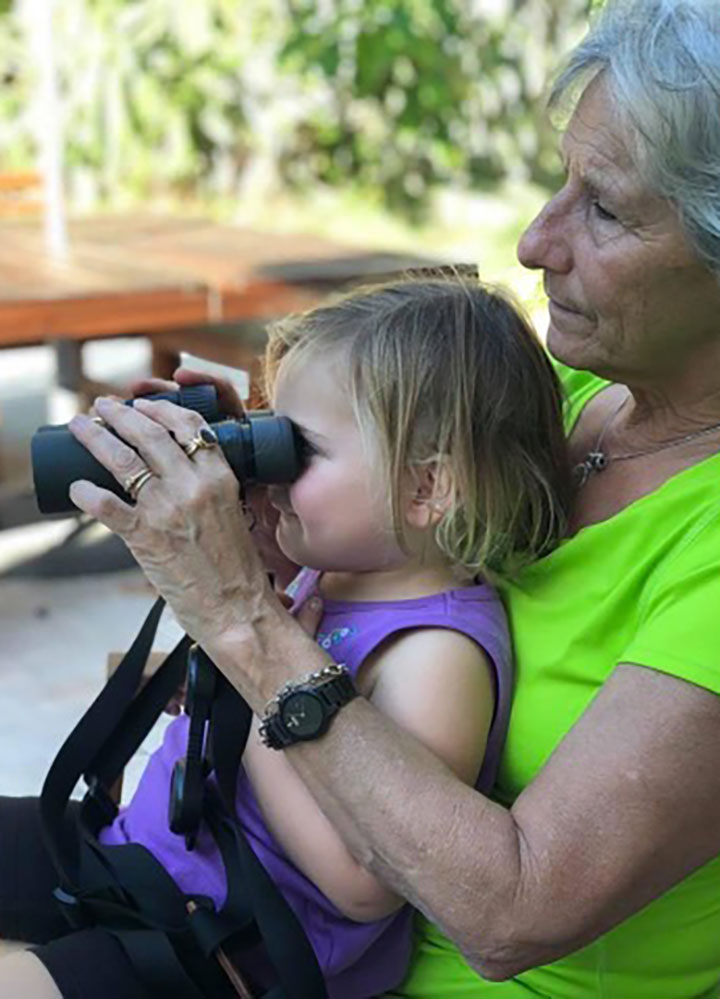Christine Root, who lives in North Carolina, enjoys birding in the Carolinas every chance she gets. (Photo courtesy of Christine Root)
The great outdoors called, and birding is in.
“Get ready,” said Cacky Rivers, bird enthusiast, photographer and entrepreneur. “Put your seatbelt on because a whole new world will open up and there’s never a dull moment and there’s always something to see.”
Bird watching dates to the late 1800s in the United States, according to the U.S. Department of Education.
Birding, or bird watching, has seen an increase in popularity in recent years and can be done from anywhere, by anyone.
“It’s where the bird takes you,” Rivers said.
America’s new favorite pastime
Birding is not a new hobby, but when the world shut down during the pandemic, nature was an escape.
“When people were stuck at home during the shutdown, they spent a lot more time noticing nature and birds that have always been around,” Jennifer Tyrrell, engagement manager for Audubon South Carolina, said in an email. “But they actually had the time to stop and take an interest.”
The National Audubon Society works to protect birds and their habitats.
Christine Root, a North Carolina birder, also noticed how people were turning to nature during the lockdown. In the years since the COVID peak, it’s clear there’s been an increase in birding, she said.
“You would have a walk and have 10 or 12 people,” Root said. “Now, we have 35. … I think birding itself is … coming into its own.”
Root began birding in the 1990s and joined the Carolina Bird Club once she moved to North Carolina.
The Carolina Bird Club is a nonprofit organization that represents and supports the birding community in the two states.
Birding by Boat is a business in Charleston that captain Adam Sherrill has been operating since 2021. The company offers nature and birding tours around the Charleston harbor, nearby rivers and creeks.
Sherrill was used to keeping conversations about birding short.
But he said it’s not uncommon today to find people who “… will talk with you about birds forever.”
He said his tour groups have seen as many as 25 different species in a two-and-half-hour window.
Cacky Rivers found her life taking a major turn when her birding hobby took on a life of its own.
She has birding in her blood. Her grandmother was an avid birder and her father was an outdoorsman.
“When I graduated college, my dad gave me a Peterson’s Bird book guide and a pair of binoculars,” she said. “And I wasn’t thrilled, because I was in my 20s and I was like, ‘Seriously?’”
But the gift ultimately became the catalyst for River’s future passion.
“When he got sick many years ago, he couldn’t bird anymore,” Rivers said.
That was when Rivers decided to pick up her camera and take pictures of birds to share with him. Her first book grew out of those photographs.
“It was 38 species of birds that my dad and I found together,” she said.
Her book, “Grounded in Flight,” started the journey of Cacky Rivers Photography. Rivers said those photos have allowed her to educate a new generation of birders.
She recalled a ninth-grade class in Charleston she spoke to about shore birds and endangered birds in particular.
“I was able to get up in front of these children and talk to them about my passion, where my stuff came from, and they were actually drawing what I photographed,” Rivers said.
Such classes illustrate how today’s birders aren’t only from an older generation.
“Since the COVID shutdown, I think there’s been more interest from the non-retired crowd in birding,” Tyrrell wrote. She said Audubon and other nonprofits have increased outreach programming with school children.
Root, too, has noticed a shift in the birder age population in the past 10 years, “with the younger people coming in and middle-aged people getting interested.”
Why bird?
What’s all the excitement about birds?
“Birding is a great way to relieve stress,” Tyrrell said. “Birding gets you outside, off screens, and it helps you become more aware of your surroundings. There are numerous studies showing health benefits of birding and just being outside in general.”
But it’s also a hobby that can be done in a backyard or in a remote rainforest in another country.
“My husband and I got on a sailboat and basically sailed around the world,” Root said. “I went to a bookstore down in Florida, and they had this tiny little book … that had all the Pacific birds and islands that I would most likely find.”
Root began cataloging as many birds as she could from then on out.
“Whatever country I went to, I just bought every little book they had on their local birds,” Root said.
The average birder doesn’t have to take on the world to see and hear a variety of species.
“Birds have evolved and adapted to live in almost any environment, even the most developed cities and urban areas,” Tyrrell said. “It doesn’t matter where you are, you can observe birds!”
In Charleston, Sherrill has added bird baths and feeders to his hobby.
“I do most of my birding, honestly, from my back porch,” he said.
Birding can be done solo or in a group.
“I love … to go to Magnolia Plantation,” Rivers said. “And there’s, like, six or seven photographers that are retired and always out there. And I love seeing them and visiting with them.”
For most birders, there’s a time for company and a time for just being with the birds.
“When I’m on a mission, I’m on a mission, and it’s also just good for my soul just to be out there by myself,” Rivers said.
Root tends to live more of an “early bird gets the worm” kind of lifestyle.
“I had a couple people that say, ‘I’m not getting up that early,’” she said. “I’m like, ‘OK, if you want to meet me on the field, you can.’”
South Carolina is fortunate to have a variety of habitats – from the salt marsh to the pine forests.
“Hunting is a popular pastime in South Carolina,” Tyrrell said. “And it has resulted in a lot of land being set aside for habitat management and restoration, which then benefits many bird species in addition to game species.”
Birders in South Carolina also can find an active spring migration in the Upstate and an active fall migration on the coast, she said.
Young birders and technology
Root has worked with young birders for a long time.
“It’s amazing, the young birders, they just bring such great energy to a meeting,” Root said. “They’re so eager to learn.”
The Carolina Young Birders Club was created in 2013. Root, a past president, is working to get the club up and running again by bringing it under the larger Carolina Bird Club.
As the engagement manager for Audubon South Carolina, Tyrrell also has seen the hobby expand to people with disabilities.
“I’ve even started a birding by ear for the blind and visually impaired course with the local Association for the Blind,” she said.
The advancement of technology is helping increase interest in birding, too.
The Cornell Lab designed the Merlin app to identify bird calls. And it’s free.
“All you have to do is push the ‘record’ button,” Rivers said, “and it tells you what bird it is, which is amazing for newbies because (if) they don’t know what a cardinal sounds like, they play it and they’re like, ‘Oh, there must be a cardinal nearby.’”
Other apps allow users to document which birds they are seeing and their location.
“It’s keeping track of all your birds,” Root said. “My birds all throughout the Pacific and Atlantic are in there.”
What keeps people intrigued with birding is the idea that it doesn’t matter who the birder is.
The key is to get outside and do it.
“The thing is that anybody, anywhere, anytime, any culture, any financial status – (birding) has no standards,” Root said.
Two blue herons in a ritual mating dance (Photo courtesy of Cacky Rivers)
Cacky Rivers birds Monday through Thursday. (Photo courtesy of Cacky Rivers)
Black skimmers with their young chick (Photo courtesy of Cacky Rivers)
Christine Root works with birders of all ages. (Photo courtesy of Christine Root)
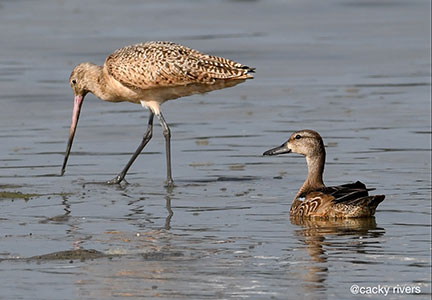
An unlikely pair hanging together – a marbled godwit and a blue winged teal (Photo courtesy of Cacky Rivers)

